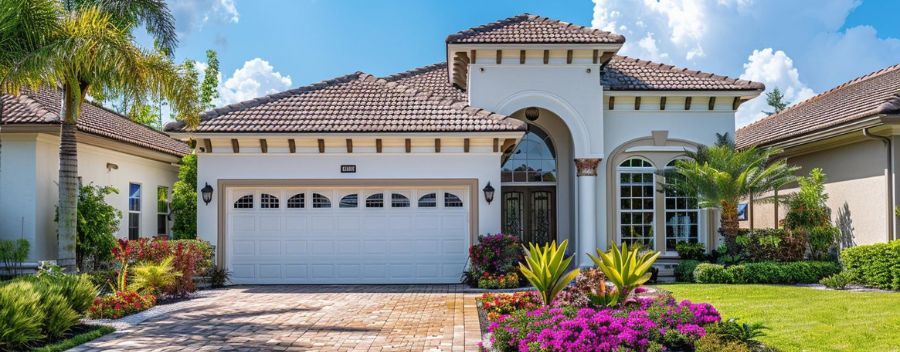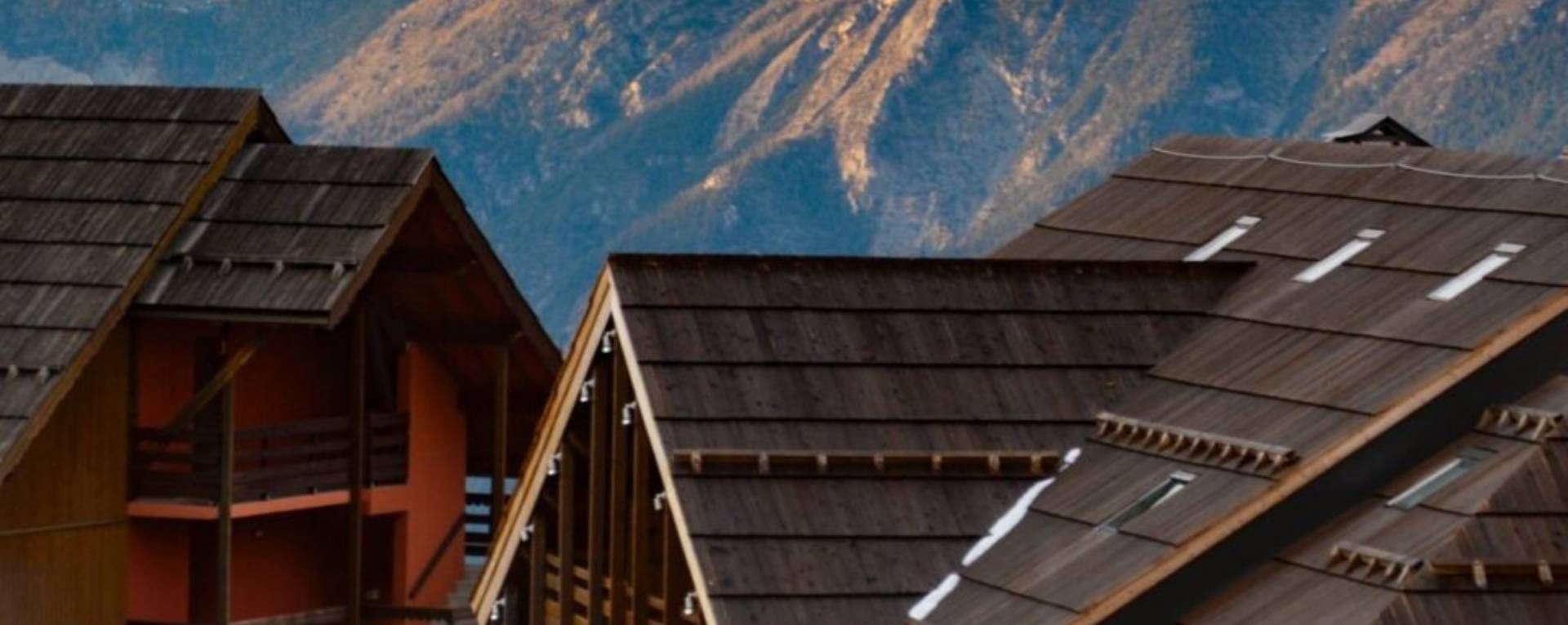What is the Average Cost of a Roof Installation in Fort Myers, FL?
If you want to install a roof on your home or office building in Fort Meyers, you must be prepared to pay an average of $6,600 for a basic roof. The price differs significantly depending on how many squares your roof has and the materials you want to use during installation. All in all, prices for roof installation services in Fort Myers start at $4,000 and can go up to $40,000, depending on what you want.
All homes and buildings, whether residential or commercial, need a good roof. A roof protects your property and adds value and curb appeal. A high-quality roof will protect your property for over 50 years, so it’s worth every penny. But good quality doesn’t come cheap, and Forth Myers residents deserve to know how much they have to pay for good-quality roof installation.
So, what is the average cost of roof installation in Fort Myers, FL? The final price includes the roofing materials, labor, and square footage of the roof so that it can have significant variations. Here, we’ll try to cover the main expenses and their average costs so you can have a better idea of how much you will need to finish such a project. Let’s see what you must include in your roofing budget.
What Affects Roof Installation Costs
The price of a roof installation includes more than just the cost of the materials and the labor of the roofers. Many people forget to factor in the additional expenses and are surprised by the final price. When you know the additional costs beforehand, they won’t catch you off guard, and you won’t have to scramble to re-budget and fit them in. Here’s what to consider.
Size and Pitch of the Roof
Larger roofs need more flooring materials and work hours to complete, increasing the overall expenses. We measure roof size in squares, with one square covering an area of 100 square feet. A roof that is 2,000 square feet would need about 20 squares of roofing material, and the cheapest roofing material is around $4.25 per square foot.
The pitch of the roof also affects installation costs. A steep pitch can complicate the installation process, requiring more safety precautions and equipment, translating into higher labor costs. Roofers may need to spend more time on a steep roof and may also need special materials to ensure proper installation. Understanding your roof’s size and pitch helps you anticipate cost variations.
Material Quality and Type
While higher-quality materials are more expensive upfront, they will give you long-term repair savings and extend the roof’s lifespan. For example, asphalt shingles are generally the most affordable option, while metal roofs and tiles can be significantly more expensive.
Different roofing materials vary in lifespan, durability, and warranty, which can affect long-term costs. For instance, while asphalt shingles may last 15-30 years, metal roofs can last 40-70 years. You should also consider local climate conditions when selecting materials. In Fort Myers, where the sun can be intense and storms are common, certain materials may perform better than others.
Labor Costs
Labor costs in Fort Myers can vary based on several factors, including the experience of the roofing crew and local demand for roofing services. Experienced roofers typically charge more for their specialized skills and high-quality work. You may encounter varying rates based on the time of year; for instance, roofing may be in higher demand during the rainy season, leading to increased labor costs. Still, the general roofing labor rate is around $20 per hour.
Permits and Inspections
Local regulations mandate that homeowners and business owners secure permits before starting any roofing work to ensure compliance with safety and building codes. Permit costs can fluctuate depending on the specific details of the project and the roofing material.
On average, permits will cost you $100 to $400. You also need inspections during and after the roof installation to verify compliance with local standards and guidelines. Each inspection may cost between $50 to $150. These fees can accumulate, so discussing them with your contractor upfront is wise to avoid unexpected charges later.
Additional Features and Customizations
Extra features like skylights, vents, or chimneys can increase roof installation costs. The need for extra materials and labor for each additional element drives up the total price. For example:
- Installing a skylight can cost anywhere from $500 to $2,500, depending on your chosen size and type.
- Roof vents vary in price and complexity, ranging from $300 to $1,000 based on the number and type of vents needed.
Customizations can improve the aesthetic appeal of your roof but may also improve its functionality. Before finalizing your plans, talk with your contractor about what features you want and how they will impact the overall costs. Make sure you understand the pricing structure, as some contractors may charge more for custom features due to the additional labor and specialized materials.
Average Prices for Different Roofing Materials
The biggest chunk of the roof installation costs is the material. Selecting the suitable roofing material affects your budget and influences the longevity and maintenance of your roof. In Fort Myers, the local climate can impact the performance of various materials, so it’s important to choose wisely. Here are some common roofing materials and their prices:
- Asphalt shingles: The price for material and installation typically ranges from $3 to $9 per square foot. Asphalt shingles are a more affordable roofing material that is simple to install, making them a popular roofing choice. However, they may have a shorter lifespan and lower energy efficiency than other materials.
- Metal roofing: The price for material and installation usually falls between $7 to $12 per square foot. Metal roofs can be aluminum, steel, or copper. They are durable, can resist extreme weather, and reflect heat. Despite their advantages, metal roofs typically require a larger initial investment and may need specialized installation.
- Tile roofing: The cost for material and installation typically ranges from $9.50 to $15 per square foot. Clay or concrete tile roofs give the property a distinctive look and last a long time. However, the weight of the tiles can require structural reinforcements, potentially increasing installation expenses.
- Flat roofing systems: The price for material and installation generally ranges from $5 to $10 per square foot. Flat roofs are standard for commercial buildings but also appear in residential design. They are an easy way to make additional usable space for rooftop gardens or patios. However, flat roofs can experience drainage problems and are more susceptible to leaks than sloped roofs.
Breakdown of Average Roofing Costs
Calculating the roof installation cost in Fort Myers involves a price-per-square-foot approach. The total cost of your roof will depend on the property’s size and the type of roofing materials. You might pay an average of $3 to $15 per square foot for roofing materials.
Additional costs include labor, permits, and necessary structural repairs before installation. There is also the removal of old roofing material, which costs around $3 to $5 per square foot. These figures will help you budget effectively for your roofing project and make informed decisions based on your financial considerations and preferences.
Total Project Cost Estimates
When considering the complete cost of a roofing project, typical price ranges vary based on the type of roof you select. For a standard residential roof installation, expect total project costs to fall between $5,000 and $15,000. For asphalt shingles, the total can range from $5,000 to $8,000.
If you opt for metal roofing, the costs usually rise to between $8,000 and $12,000. Tile roofing projects can reach $10,000 to $15,000 or more, depending on how intricate the job is. Always request a detailed estimate from contractors that outlines material costs, labor, and additional fees, allowing for a clearer understanding of what to expect financially.
Seasonal Considerations
More people are looking for roofing services during late spring and summer, driving up prices. If you’re looking for the best rates, consider scheduling your roof installation during the cooler months of fall or early spring when demand drops.
This timing can also help you avoid the intense heat and potential rainstorms of summer, making the installation process smoother. Roofing contractors run deals and offer discounts during slower seasons to fill their schedules, further helping you save on costs. Plan ahead and consider these seasonal trends to optimize your roofing project budget effectively.
Find Professional Roof Installers Near You
Roof installation in Fort Myers isn’t a cheap investment. But if it’s done right, it’s worth every penny. So, call Boss Roofing Experts when you need the best quality roof installation services with transparent and fair pricing.
We will give you a detailed estimate and break down every expense so nothing comes as a surprise. Regardless of the style and material you want, our roofer will do a high-quality installation that will protect you for decades.
Experience first-rate craftsmanship and service – call us for all your roofing needs today!
FAQ
What’s the price for installing a tile roof in Fort Myers?
A terracotta tiled roof can cost anywhere from $10,000 to $25,000. The type of tile, the roof’s size, and the complexity of the installation all affect the final price. Materials of higher quality significantly increase costs. So does the intricacy of your roof design.
What is the time frame for roof installation?
Installing a new roof takes around 1 to 3 days, depending on the roof’s dimensions and the complexity of the work involved. The weather and the roofing material also impact the timeframe. Professional roofers can provide a more accurate estimate based on your circumstances.
Does the size of my home play a role in roofing costs?
Yes, roofing larger homes is more expensive due to the extra materials and labor. Roof complexity, such as the number of slopes and features, also matters. A detailed estimate from a contractor will help clarify how size affects your project.
Are there seasonal discounts for roof installation services?
Yes, some roofing companies offer seasonal discounts, particularly during the off-peak months. Winter or early spring often sees reduced demand, leading to potential savings. Checking with local contractors about available promotions can help you save on roof installation costs.


